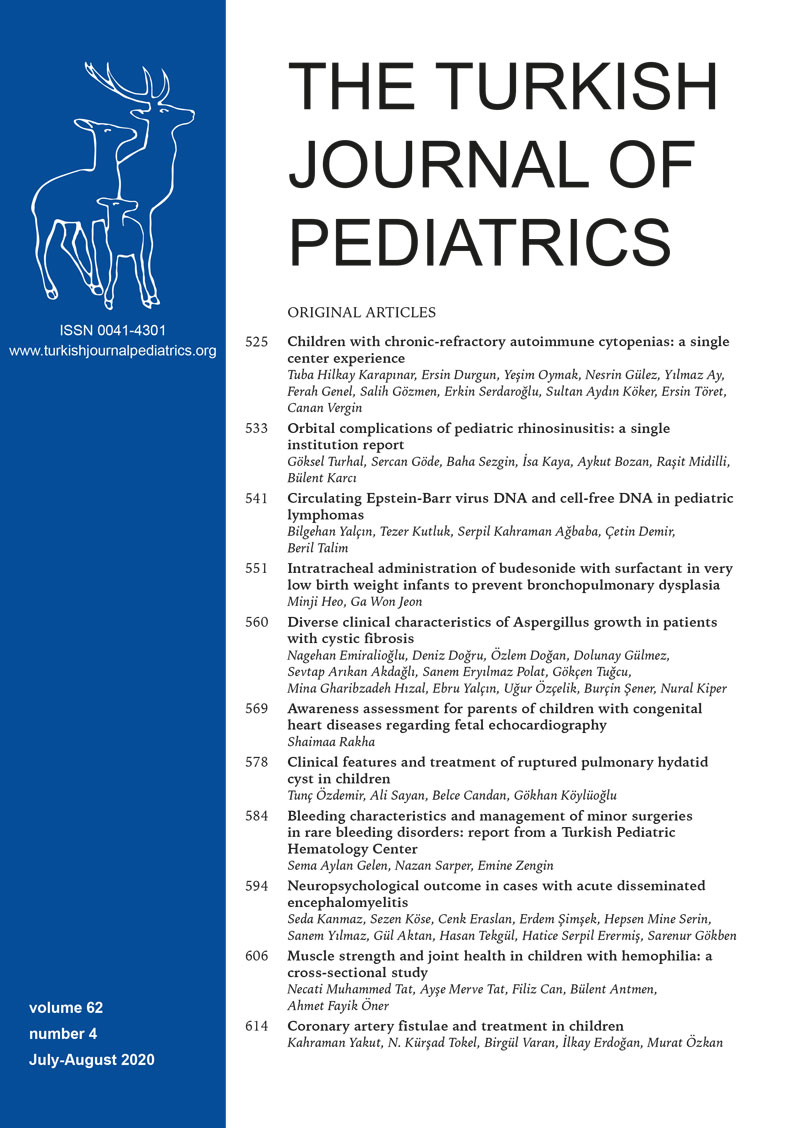Abstract
Backgroud and Objectives. Rupture is the main complication of the pulmonary hydatid cyst (HC). The aim of this study was to evaluate the clinical features and treatment of ruptured pulmonary HC.
Method. The medical records of children who had undergone surgery between January 1999 and December 2017 for pulmonary HC were retrospectively evaluated. One hundred forty seven of these patients had ruptured HC at the time of diagnosis. The gender, age at the time of diagnosis, sociogeographic status (i.e., from urban or rural population group), symptoms, affected lung region, cyst dimensions, preoperative complications, medical treatment duration, and associated morbidities were evaluated.
Results. The study included 649 patients with pulmonary HC. Mean age was 9,8 (2-17) years. Three hundred forty four patients were male and 305 were female. The most common symptoms were, cough accompanying mucopurulent sputum, hydropthysis and dyspnea in patients with ruptured HC. The diagnosis of all the patients were established in the light of the findings obtained from two-sided chest x-ray and CT of the thorax. Simple cystotomy via posterolateral thoracotomy was the treatment of choice. Cappitonage was not performed in any patients. Lung resection was performed only if there was an irreversible and disseminated pulmonary destruction.
Conclusion. Rupture of the pulmonary HC is the most common and also the most feared complication. Rupture may be either intrabronchial or intrapleural. Radiologic imaging is diagnostic. Rupture of the pulmonary HC must be considered as an emergent issue. Simple cystotomy amd removal of the laminated membranes are adequate treatment of choice. Meticulous closure of the bronchial openings is mandatory to avoid prolonged air leak. Cappitonage is unnecessary.
Keywords: chest, hydatid cyst, pediatric
Copyright and license
Copyright © 2020 The Author(s). This is an open access article distributed under the Creative Commons Attribution License (CC BY), which permits unrestricted use, distribution, and reproduction in any medium or format, provided the original work is properly cited.














